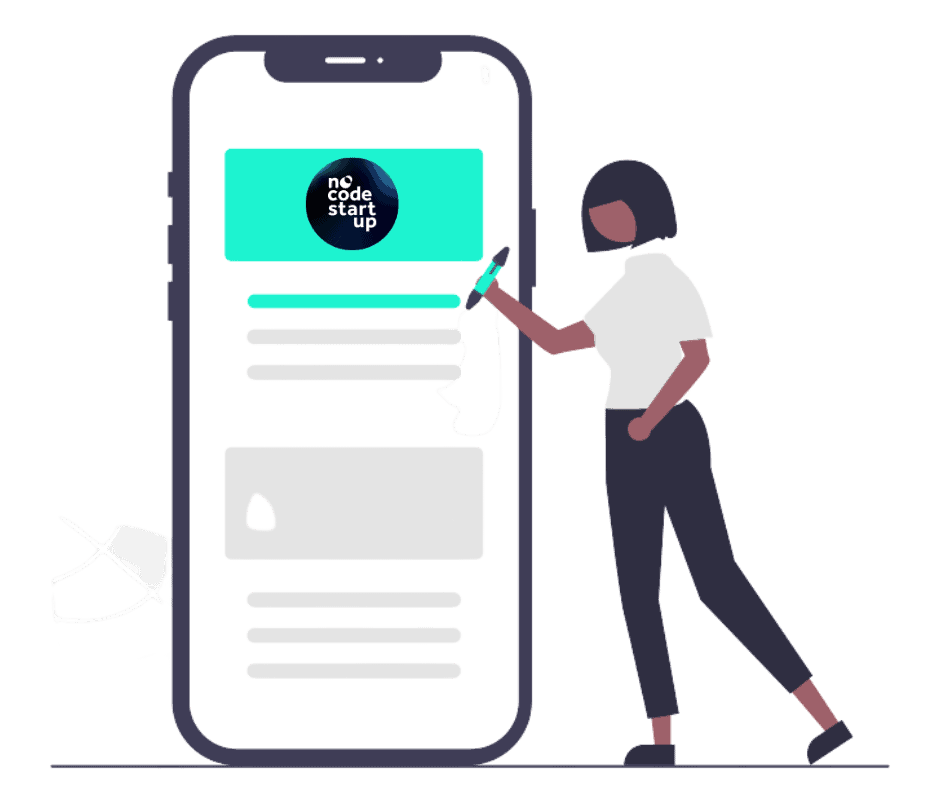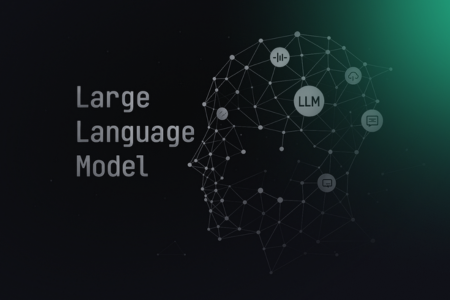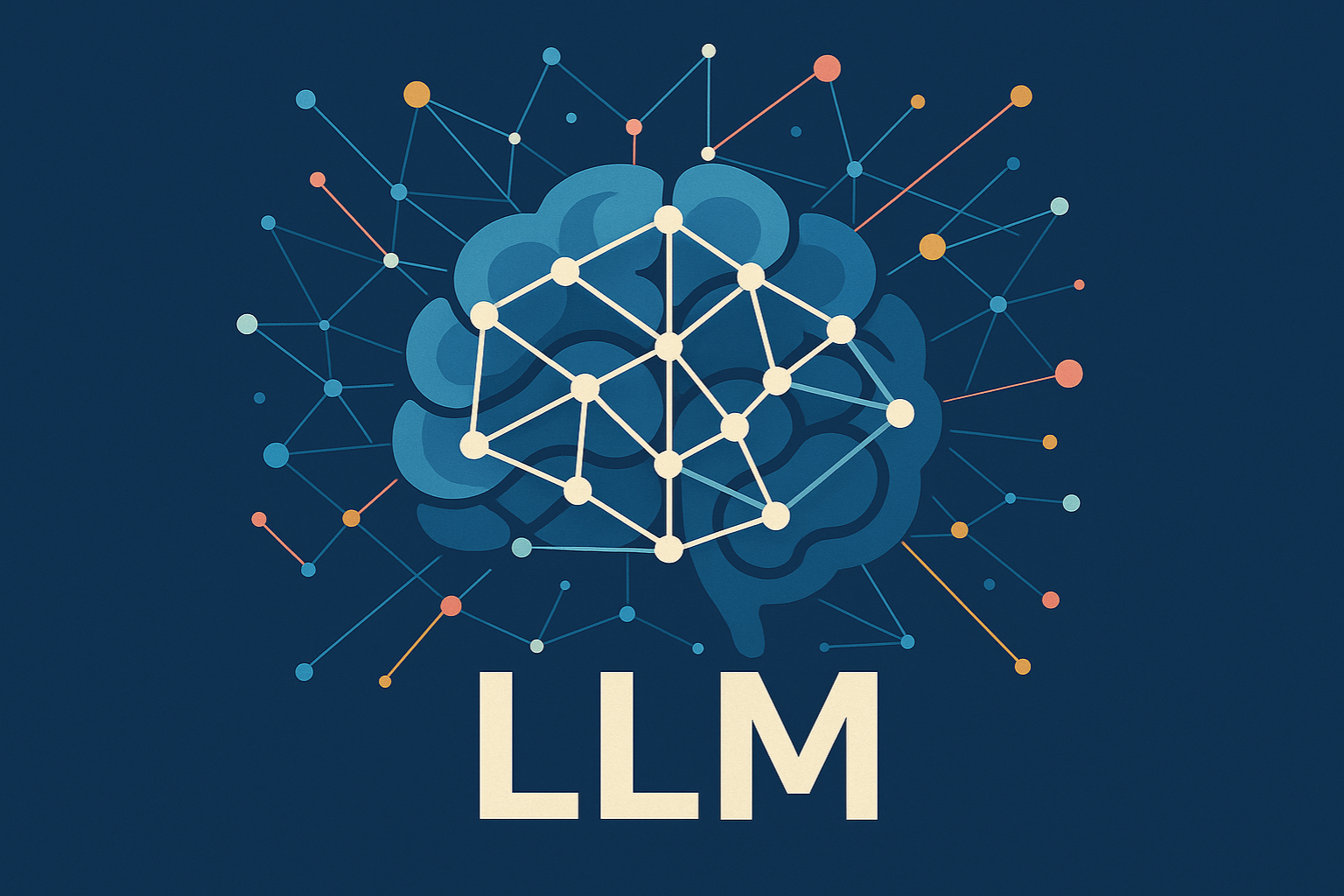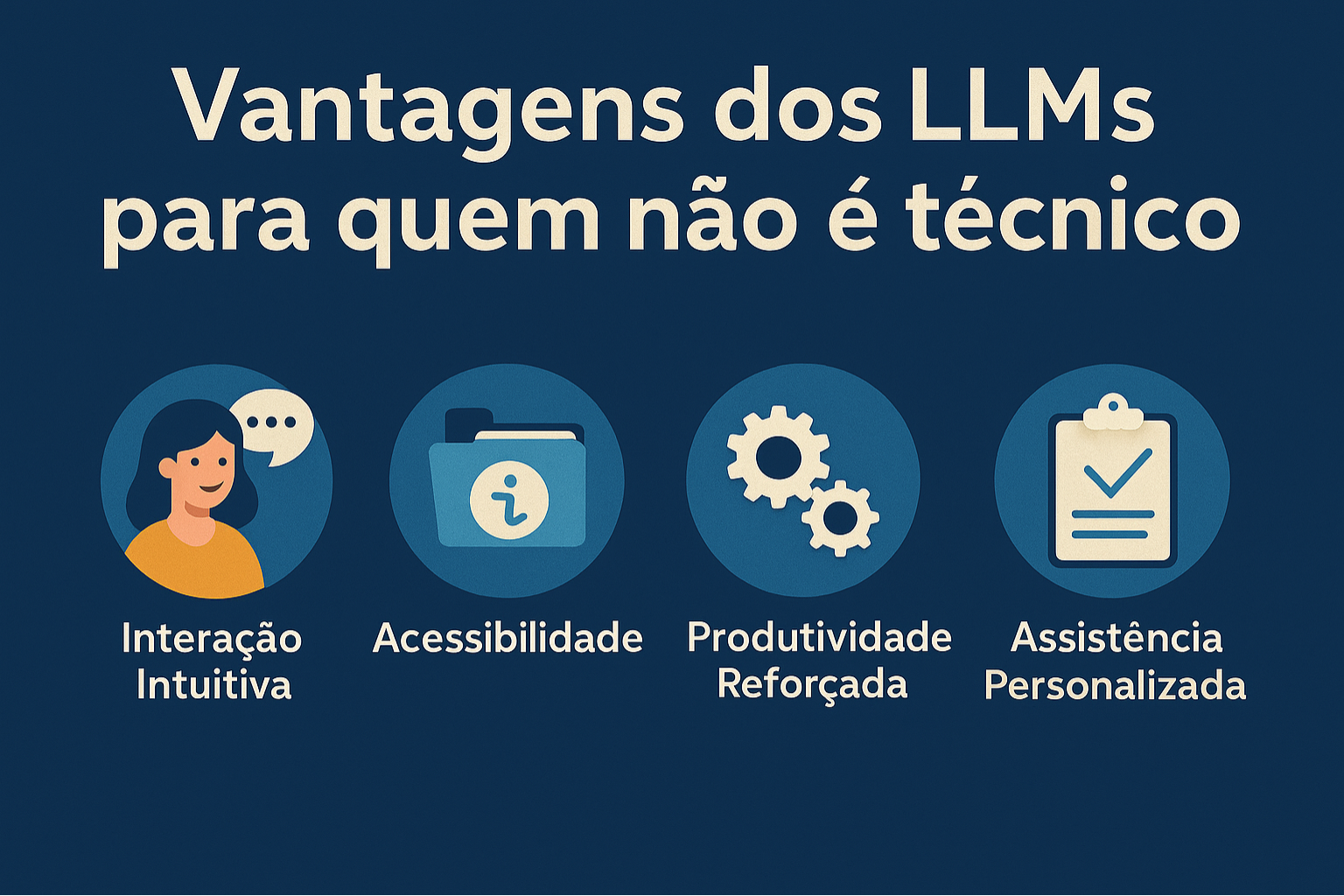Estimated reading time: 15 minutes
Years ago, the only option Jeff Bezos and Mark Zuckerberg had to create Amazon and Facebook was to spend hours in their garage writing lines and lines of code.
Thankfully, technology evolves...
Today we have more practical, faster and cheaper options to build platforms similar to Amazon, Facebook and practically any other type of app or software that you imagine.
Remember that day you had a brilliant idea and said: wow, if someone made an app about it, they would be rich
Or that day when something bothered you and you thought: if someone created a solution to this problem, it would make a lot of money
Maybe if you had access to this content earlier, that person could be you.
Thanks to the technologies called no-code, you could have taken your idea off the ground and developed it without writing a single line of code.
Knowing what is in code will make you look at the world of programming with different eyes.
If you like technology and development, but don't have an affinity for programming, understanding what no-code is will be the answer you've been looking for.
In this article you will understand a little more about it.
Table of Contents
After all, what is no-code?
The term no-code means “without code”, being a movement in the technology area that brings the possibility of developing solutions in mobile or web format without needing a single line of code.
When we speak no-code we refer to:
“Practice of developing applications, softwares or systems through visual interfaces.”
That is, no-code developers, instead of developing by writing lines of code themselves, use tools that allow visual development and develop based on logic that is much more understandable and similar to human language:
This is very much in line with the words of the CEO and founder of Bubble, one of the biggest no-code platforms today:
“Why in today's world are people expected to learn and speak the language of computers?
Instead, shouldn't computers learn to speak our language?“
Emmanuel Straschnov – Founder and CEO of Bubble
I don't know about you, but to me this makes a lot of sense.
And how to do it?
This is done through no-code tools like the bubble io it's the FlutterFlow, where you create an application through visual development, just dragging blocks and defining the necessary logic.
Such tools facilitate the development process, breaking barriers for those who wanted to work with the creation of applications, but who do not know how to code.
This brings endless possibilities, as it allows anyone to develop their own application, taking their idea off the ground without having to resort to a program.
This greatly reduces development costs, as development time is shorter and also qualified IT professionals are often a very expensive workforce.
The no code movement

Now that you know what is no-code, let's understand a little more about this movement.
It might seem like it's big news, but it's actually something that's been going on since the late 90's.
However, as you can imagine, at that time there was only a sketch of what it would be like today, with very limited platforms – but, for the time, it was a great advance.
In 2018 there was a great expansion of the area and the tools used, causing the technological scenario to suffer a great revolution!
That year there was a publication of extreme relevance for the medium, showing that several startups were investing in this development model – which is one of the reasons for their more agile solutions.
The no-code is a simple, intuitive, efficient and agile solution that promotes a series of benefits for all companies (and even for people's daily lives).
Why does the no-code matter today more than ever?
If you've been following the tech market a bit in recent years, you've probably heard about the difficulty companies have in hiring and retaining developers.
This is because, the exponential growth of companies using and creating their own applications and softwares lately, has greatly increased the demand for these professionals.
And since it takes time to make good developers, perfect chaos was created.
A high demand that doesn't stop growing (and won't stop growing for a long time), with a low supply that we have difficulty increasing due to the time it takes to train programmers.
According to the US Labor Statistics the lack of developers amounted to 40 million workers in 2019. By 2030, the expectation is that this number will reach 85 million.
Generating a global loss of U$D8.4 trillion.
And companies have already felt the consequences of this strongly:
- Salaries and benefits to be able to hire and retain such professionals have never been higher;
- Application development costs keep growing;
- Difficulty for small and medium-sized companies to enter this game;
There are thousands of companies with this pain, a world of opportunities.
And this is where no-code shines…
The brilliance of no-code
no-code platforms greatly reduce the learning curve for developing an application or software.
For you to master a programming language, it takes years of practice and study, as it is no-code, in a few months you already have a good command of the tool and can already be developing end-to-end applications.
This greatly increases our power to be able to serve these thousands of companies.
In addition, because it is much more intuitive, the speed with which we can create applications is much greater, reducing the time and cost of the process as a whole.
This has drawn a lot of attention from entrepreneurs and companies, and as these companies have realized this, many have opted and preferred the no-code development.
According to projections of GLOBE NEWSWIRE the lowcode and no-code market should grow from a measured size of U$D 10 Bi in 2019 and reach U$187 Bi by 2030.
At this point, I imagine that the opportunity is already very clear to you, but it may be that you are still wondering how you can actually benefit from this revolution.
How to benefit from no-code
Firstly, it is interesting to mention that the technology market has attracted the interest of many people in recent years.
This is mainly because this is a segment that offers many perks for professionals.
Salaries are high and with many benefits and the home office is already a standard practice in the market.
In addition to the fact that it is a market that does not stop growing and is practically anti-crisis, rain or shine it is a market that has demand.
That is, if companies are doing well and growing, they invest in technology and innovation to grow even more and differentiate themselves from competitors.
If they are in crisis, they invest in technology and innovation to cut costs and differentiate themselves from competitors.
And this sum of factors has attracted many people to this market.
However, this is also a segment that requires greater training of professionals and therefore many people have had difficulties in making this change.
Whether you are a person who had already thought about migrating to the tech market at some point, or if after this content you became interested in the segment, or even if you are already in this market, the no-code opens up a great opportunity.
What to say that no-code is easy?
Quick answer: No.
You will still need to master many other aspects of application development and fundamental technical understanding.
But no-code tools have a much lower learning curve
And with this new skill, the ways to make money are diverse.
You can work within a company, creating and improving your no-code applications. For example: transforming outdated excell spreadsheets into robust apps, with complete dashboards.
Powerful skill to secure a pay raise or promotions.
You can act providing services to other companies as a freelancer or creating your own agency.
Because apps are high value-added products, you can charge R$1000, R$2000, R$5000, R$10000, R$50000 and even much more for a project.
And because with this skill you can also get your app or business idea off the ground.
Create your own startup, your own SaaS (subscription app).
Anyway, the opportunities are countless.
What can we create with no-code
As I already mentioned here, with the level where the tools are today, you really can create practically anything with no-code.
You can create:
- Freelance Hiring Platforms
- scheduling systems
- Influencer Platforms
- Temporary home portals for pets
- mood control apps
- even games
The opportunities are really endless, ecommerces, marketplaces, ERPs, SaaS, scheduling systems, delivery systems, social networks.
Copy Uber, Airbnb, Facebook, Instagram.
Use artificial interligence, Web3 apps, Token Gated apps
and the list goes on.
Today in tools that allow API integrations, the range of possibilities is really endless.
But that's what we couldn't create with no-code.
And then the answer is really, it depends..
Everything I mentioned above can be created with no-code, but it depends on the tools you are using.
Therefore, one of the first steps is to understand your project's requirements and select a tool that fits it.
There's no need to select an extremely complex tool if your goal is to create a super simple app.
The same is true if the objective is to create a complex marketplace with several users, you need to use a tool that allows this.
Tip of 5 main no-code tools
Some examples of the best no-code tools currently are:
- Bubble – for creating web applications
- AppGyver – for creating free and offline mobile apps
- FlutterFlow – for creating complete mobile apps
- Webflow – for creating websites with a high degree of design
- Xano – for robust backends
For more detail on the no-code tools, we have prepared a specific article on the subject here on our blog.
Also check out our free courses:
Free Bubble course for beginners
Free FlutterFlow course for beginners
Free AppGyver Course for Beginners
See the no-code in action
Do you want to better understand what this codeless development is? Let's go to a practical example so that you can abstract better.
A seller always has a series of slips to generate after purchases. Are many emails, which generates hours of work! After passing through sales, it is still forwarded to the financial sector, generating more work for both sides.
Automating this process would be a dream!
Meanwhile, the company's IT team has many other demands and solving this workflow is really not their priority. How to resolve this situation?
Even if the sales and finance teams are not familiar with codes and development, with the tools in code they would be able to develop a solution to improve this workflow, building automation and tools to facilitate these processes.
No-code turns non-technical citizens into technology creators!
No-code x low-code
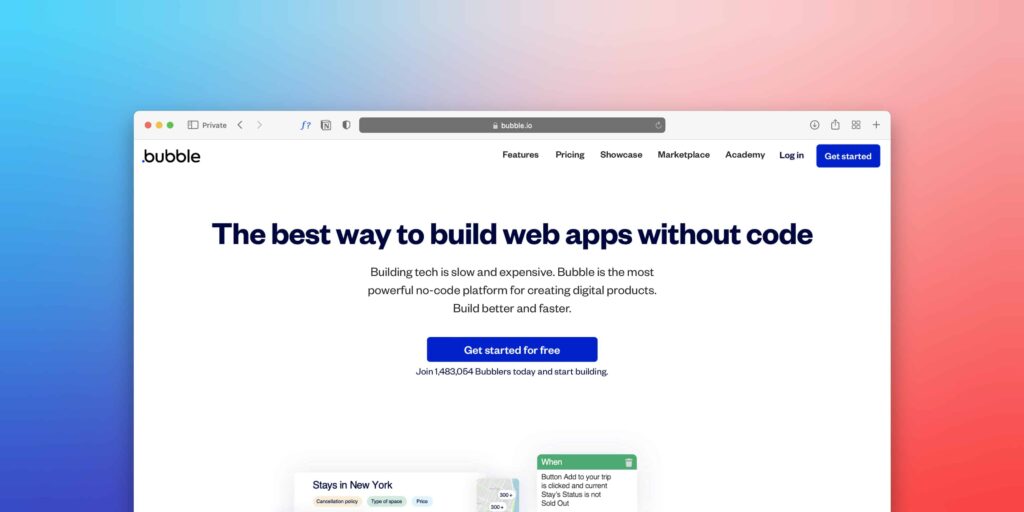
When looking for information about what is no-code, you will probably come across the term low-code. But what would that be?
Well, according to the translation itself we can already have an idea about it. No code refers to the use of no code, while low code requires a little code.
Why invest in no-code?
Everyone who wonders about codeless development also wonders how they can take advantage of this revolution, and the possibilities are many.
No code in the corporate world
This is closely related to the example we cited earlier. You are no longer at the mercy of IT staff or even third-party professionals to develop good in-house solutions.
Also, you don't need to be a programming master to do this. If you manage to solve an old problem with this type of solution, you can be sure that you will be very well noticed by all collaborators.
This, by the way, is a great differential of a good employee. Knowing how to identify a problem, design a flow to solve it and translate all of this with the no code tools is, for sure, something very positive.
For your own investment
Another possibility is to use the no code tools to create applications for third parties or even to sell them on the internet.
From the moment you create a more generalist solution, then you can offer it to several companies or other customers. That is, you are monetizing the apps.
It's a great way to earn extra income or even make it your only source of income.
Companies that want to stand out in the market do not hesitate to acquire solutions that will improve and optimize their respective processes.
Many of these companies still don't know what the codeless movement is, so you'll be one step ahead.
no-code Market Predictions
First a few more facts:
- The no-code market has grown a lot and fast
- Companies have recently received large contributions from investors.
- Which only reinforces the predictions presented at the beginning of the video.
- Market that is just beginning and is not yet widely known by the population and companies.
This leaves an even bigger window of opportunity for those just entering the no-code market.
Those who arrive first drink clean water.
Forecasts:
- I dare say that within a few years, 99% of MVPs will be built with no-code.
- I also believe that soon no-code will be the main way to create internal applications, dominating this market in the small and medium enterprise segments.
- We will see more and more no-code being used in all types of companies for prototyping, by agile squads.
- no-code software houses started to steal market from the traditional software houses and will have a good share of the segment, mainly in the Founders market, small and medium companies.
And yet, about some interesting branches that I have my eye on and I see a bright future ahead is the combination of:
- No code + artificial intelligence
- Nocode + Web3
Conclusion
No code tools have a very solid place in the market and the trend is for their use to grow more and more.
Knowing the possibilities of this codeless programming will open many doors for you, regardless of where you want to apply this knowledge.
Now that you know what this movement is, how about exploring a little more of its tools and opportunities?
Think of your company's biggest workflow problem and try to solve it with this solution!
What is no-code?
The term no-code means “without code”, being a movement in the technology area that brings the possibility of developing solutions in mobile or web format without needing a single line of code.
What is low-code?
According to the translation itself, low-code refers to the little use of code needed to create applications.
Why invest in no-code?
No code is still a new market with a high growth projection due to the immense range of problems it solves, thus being a great market to invest in.
